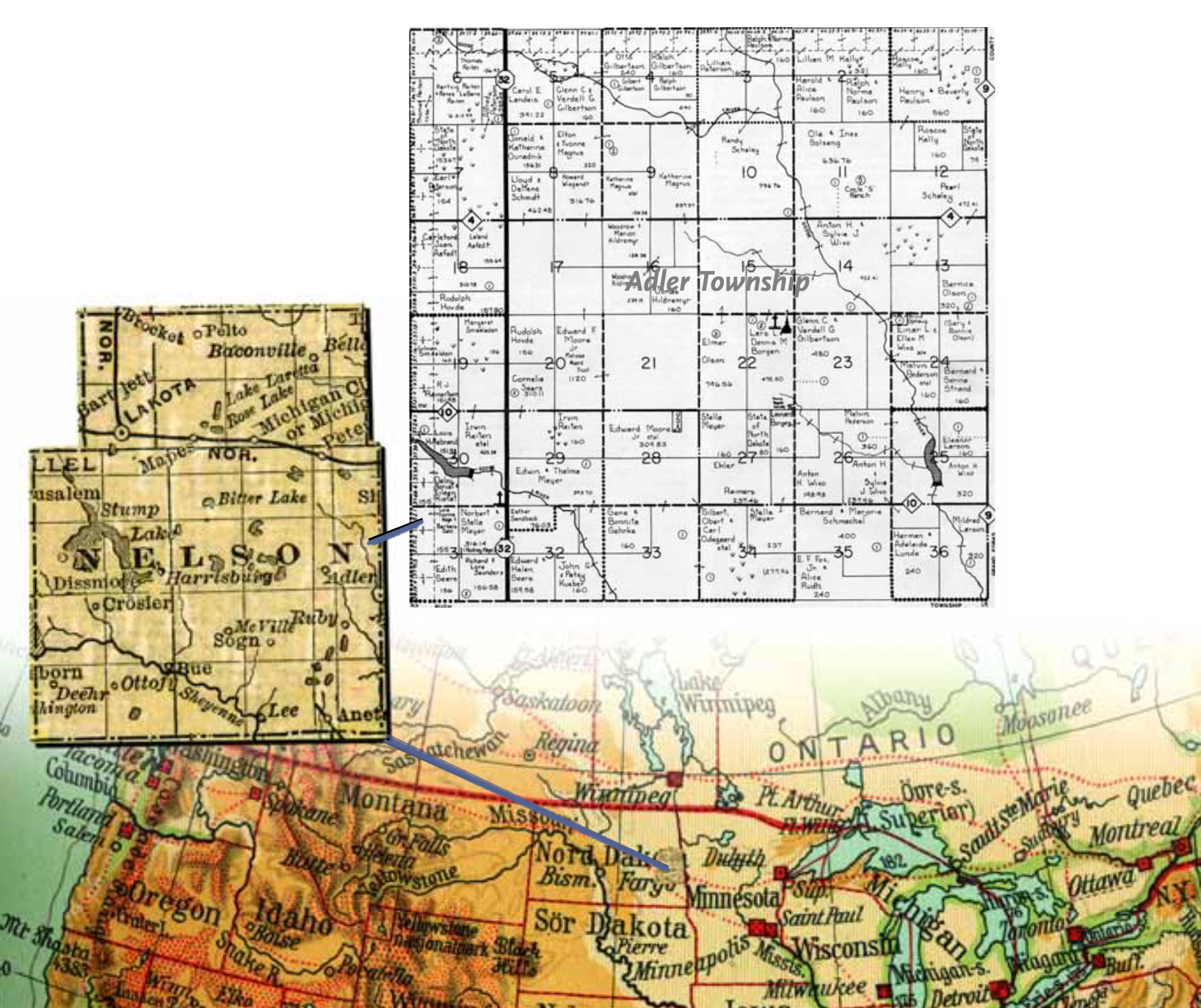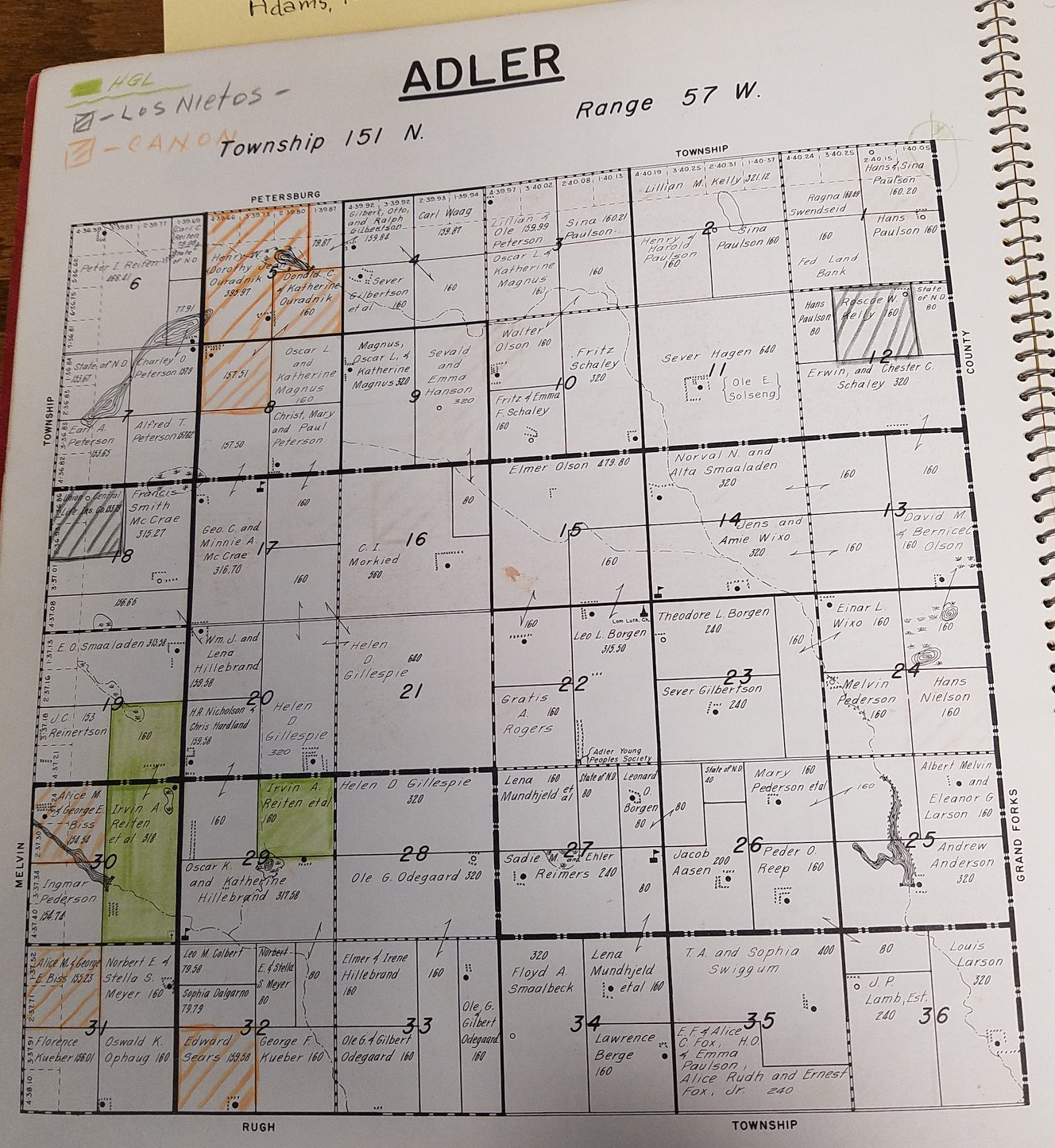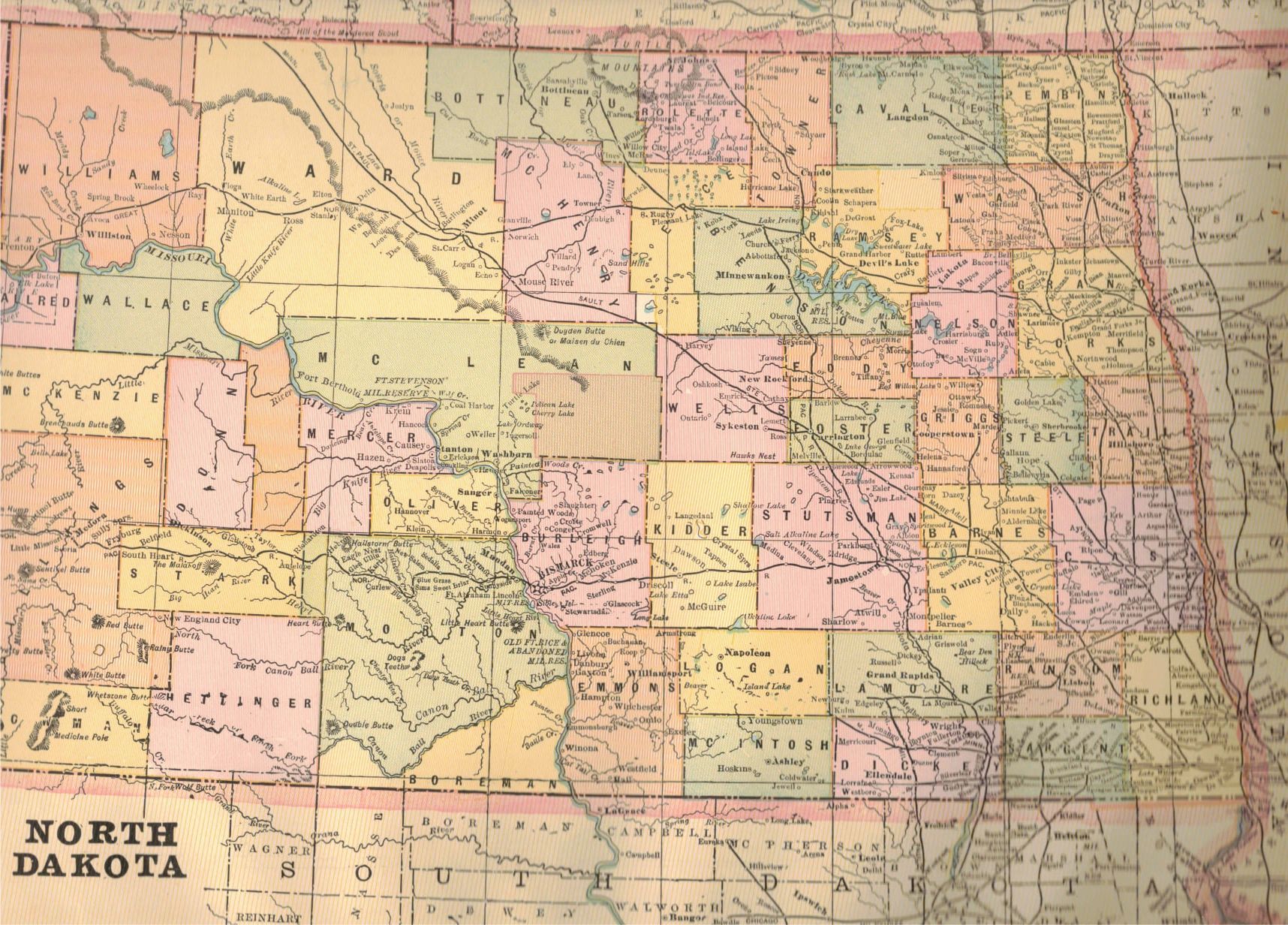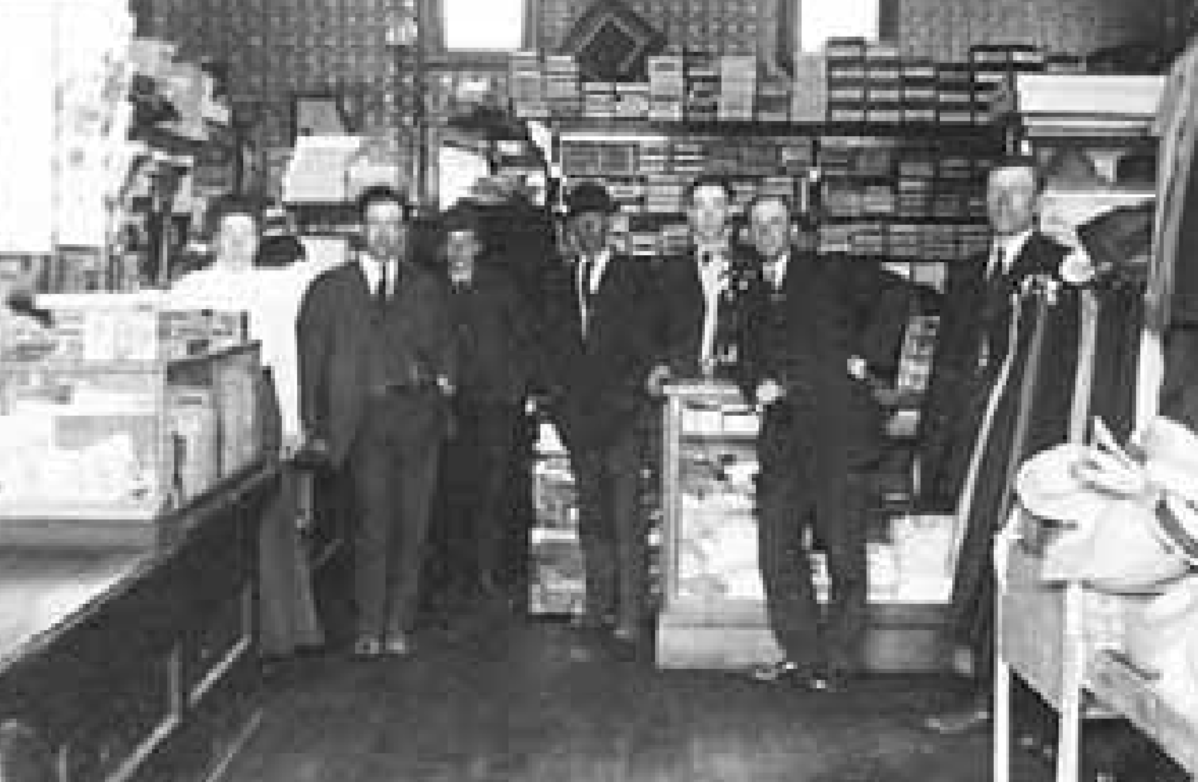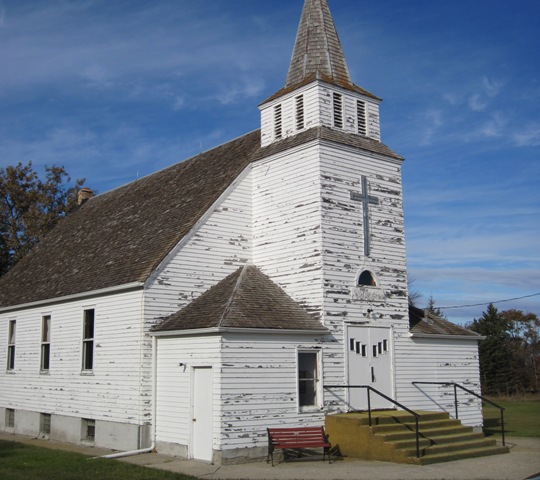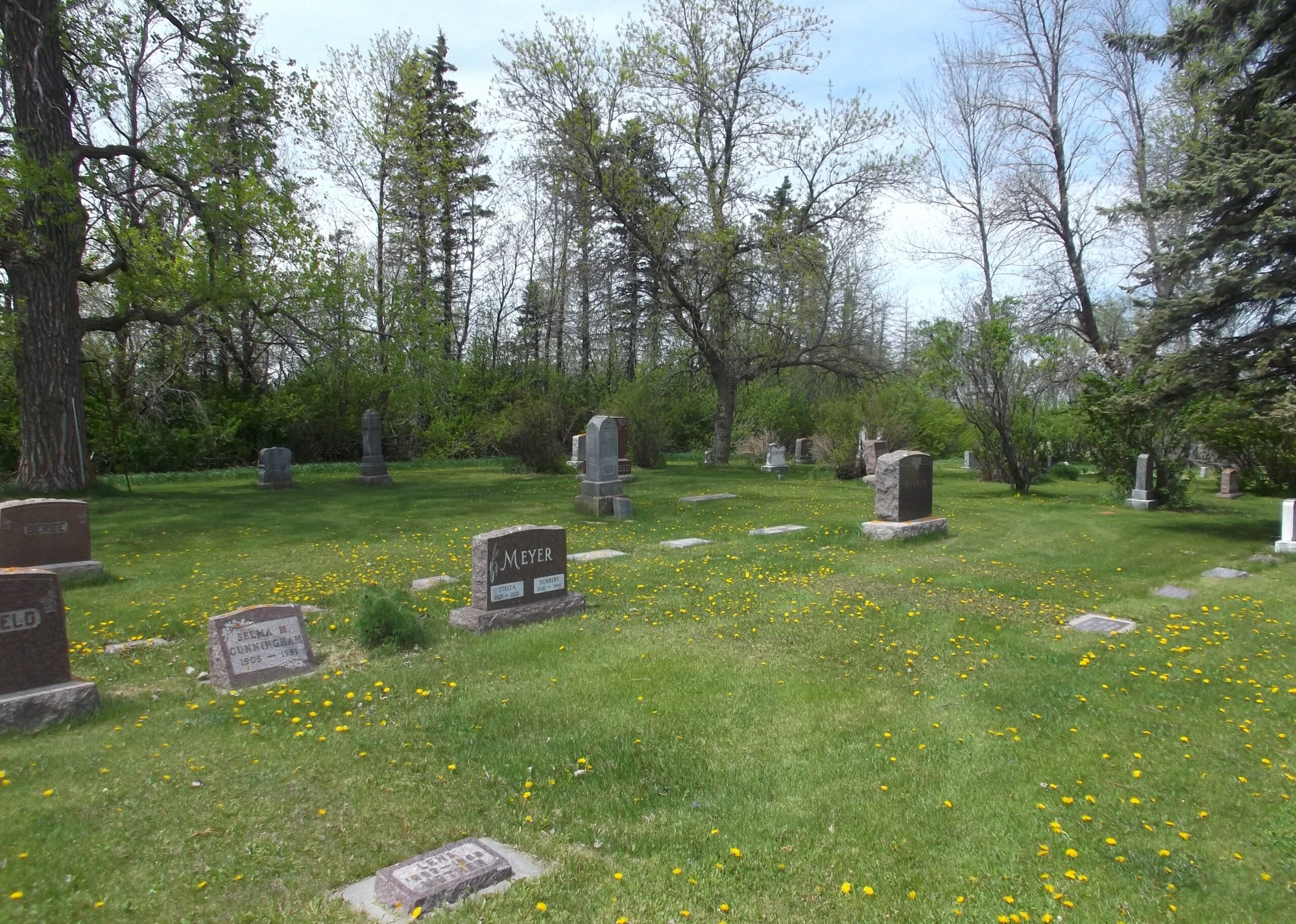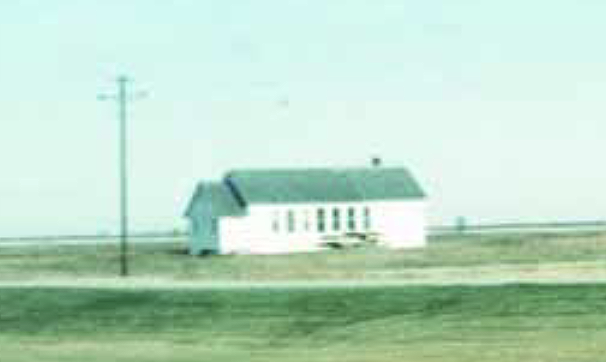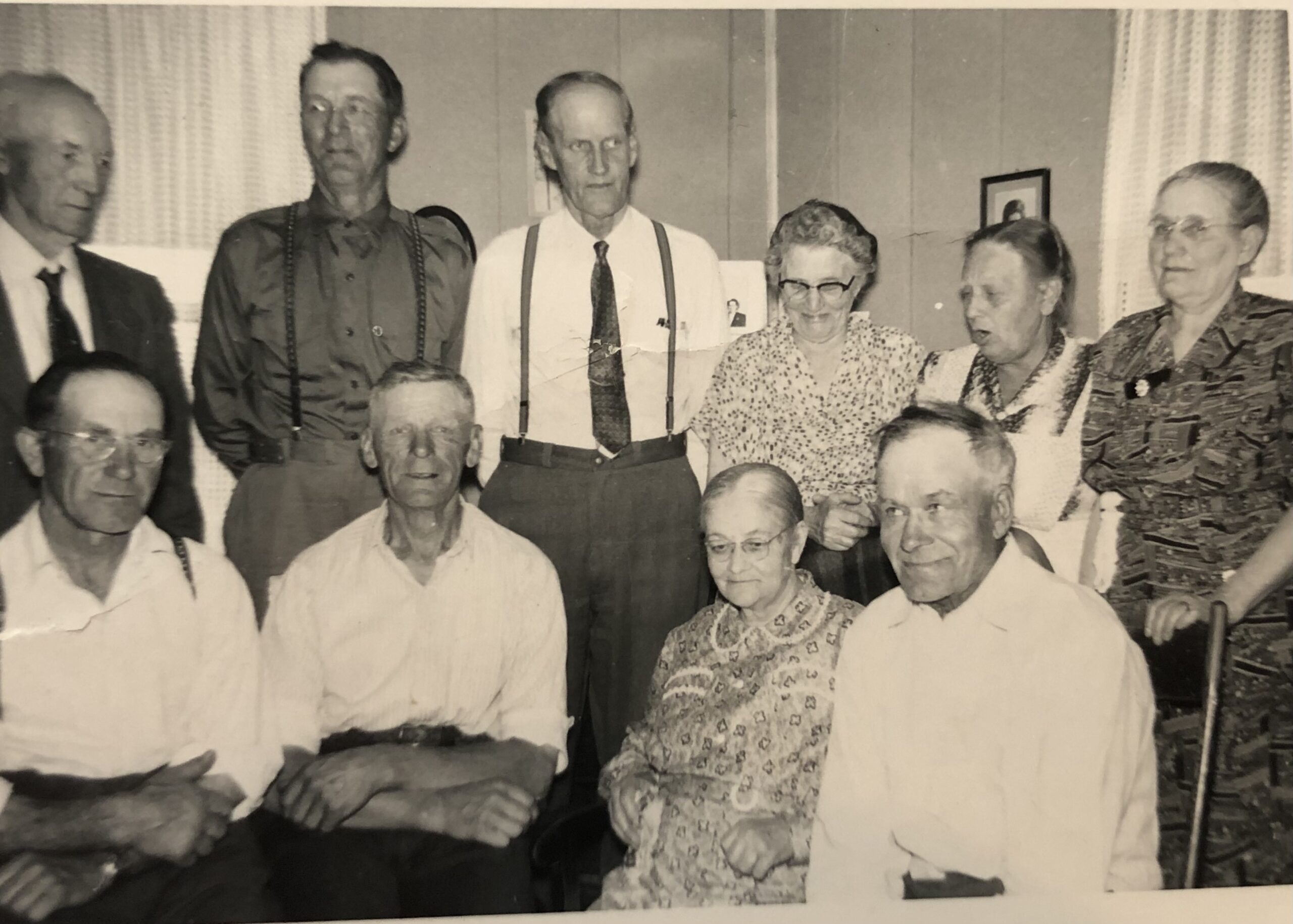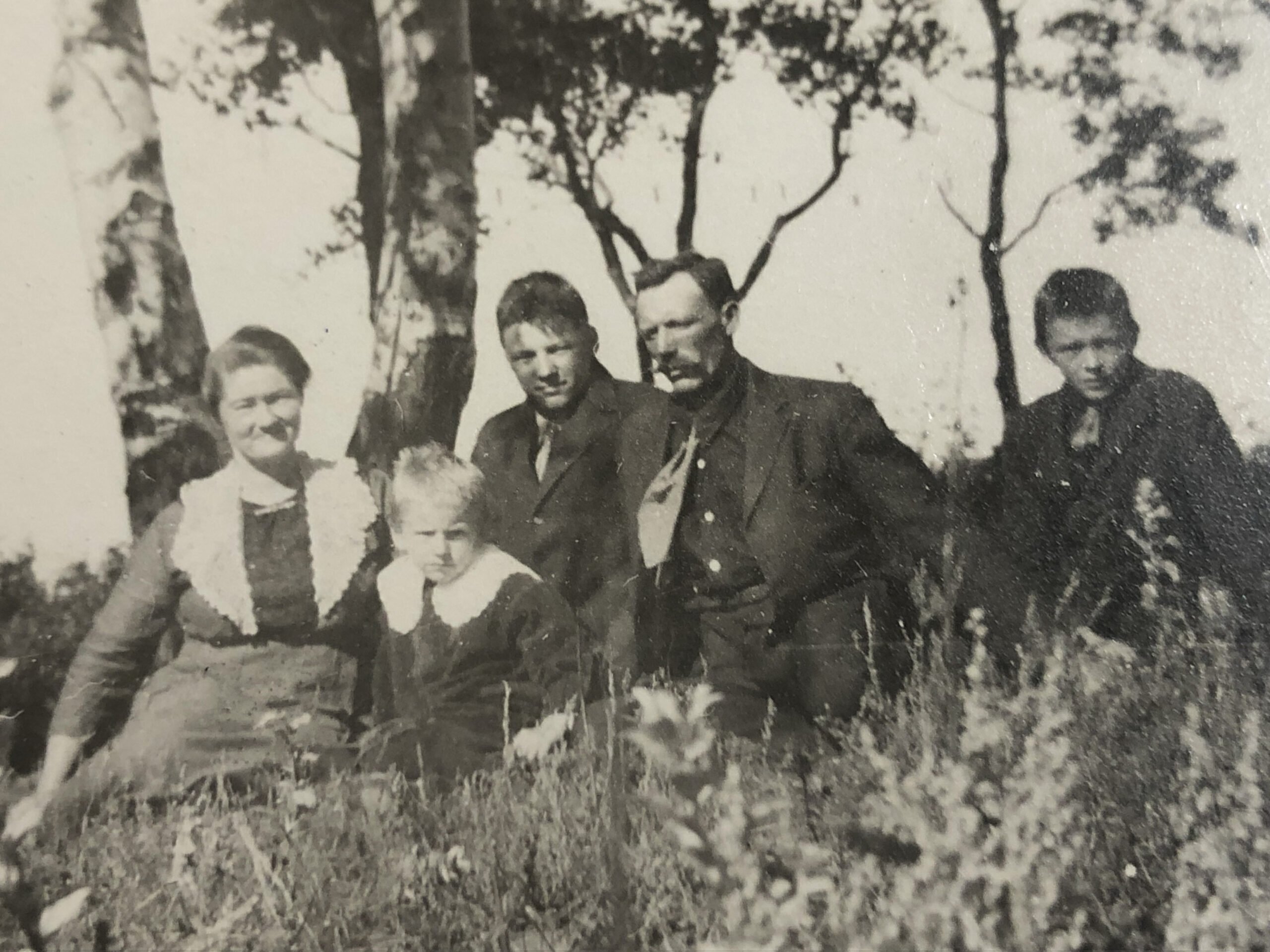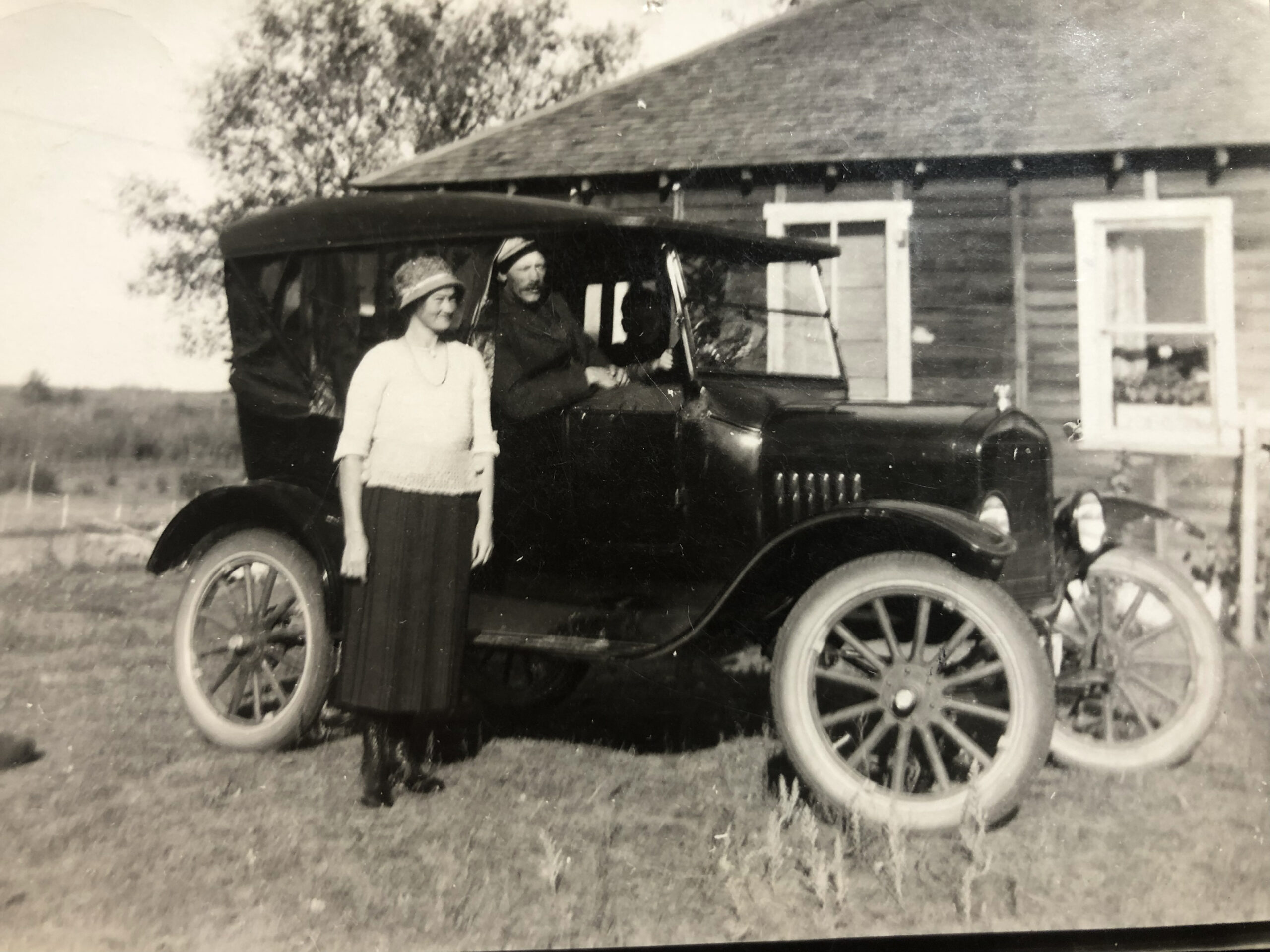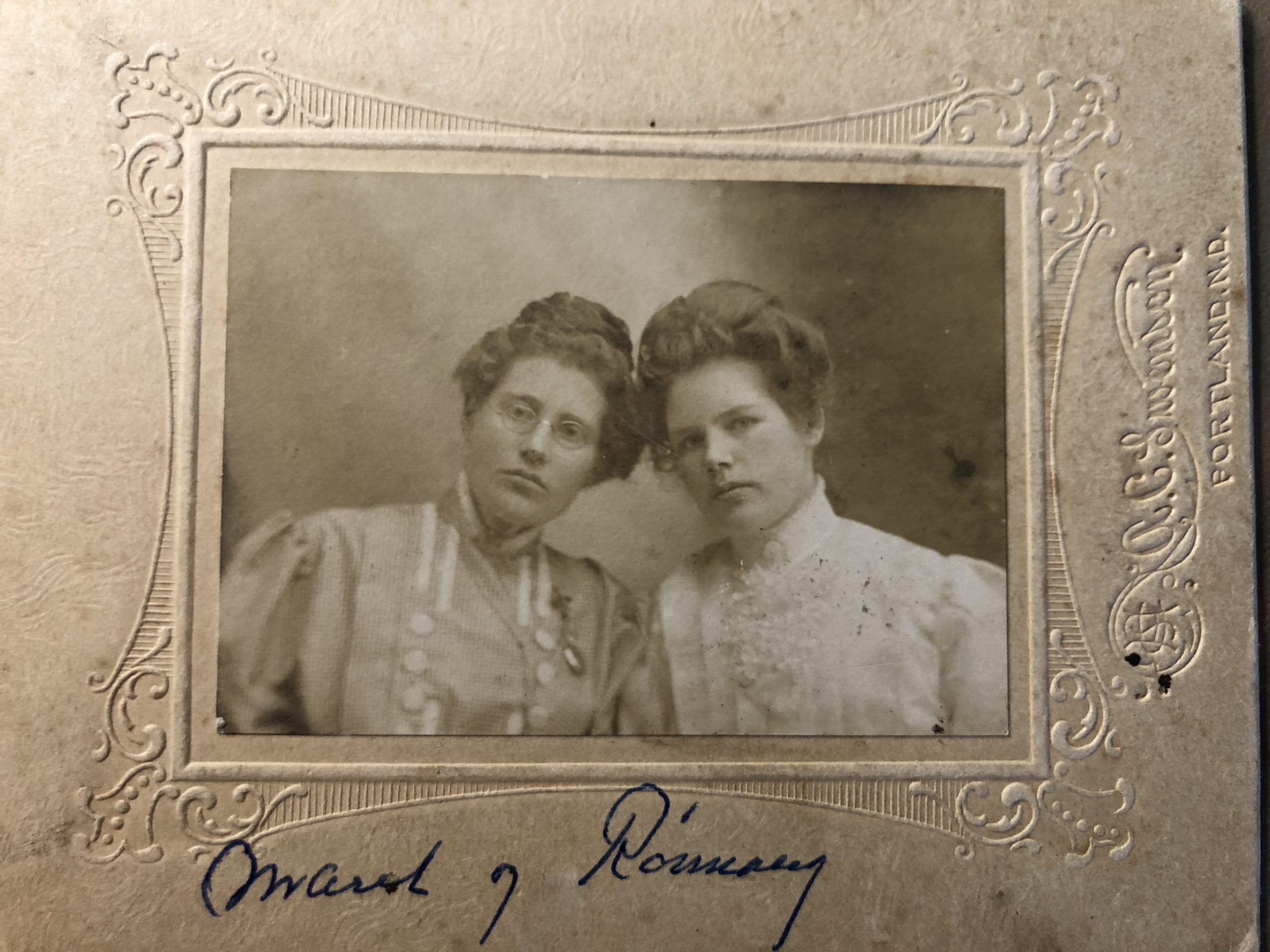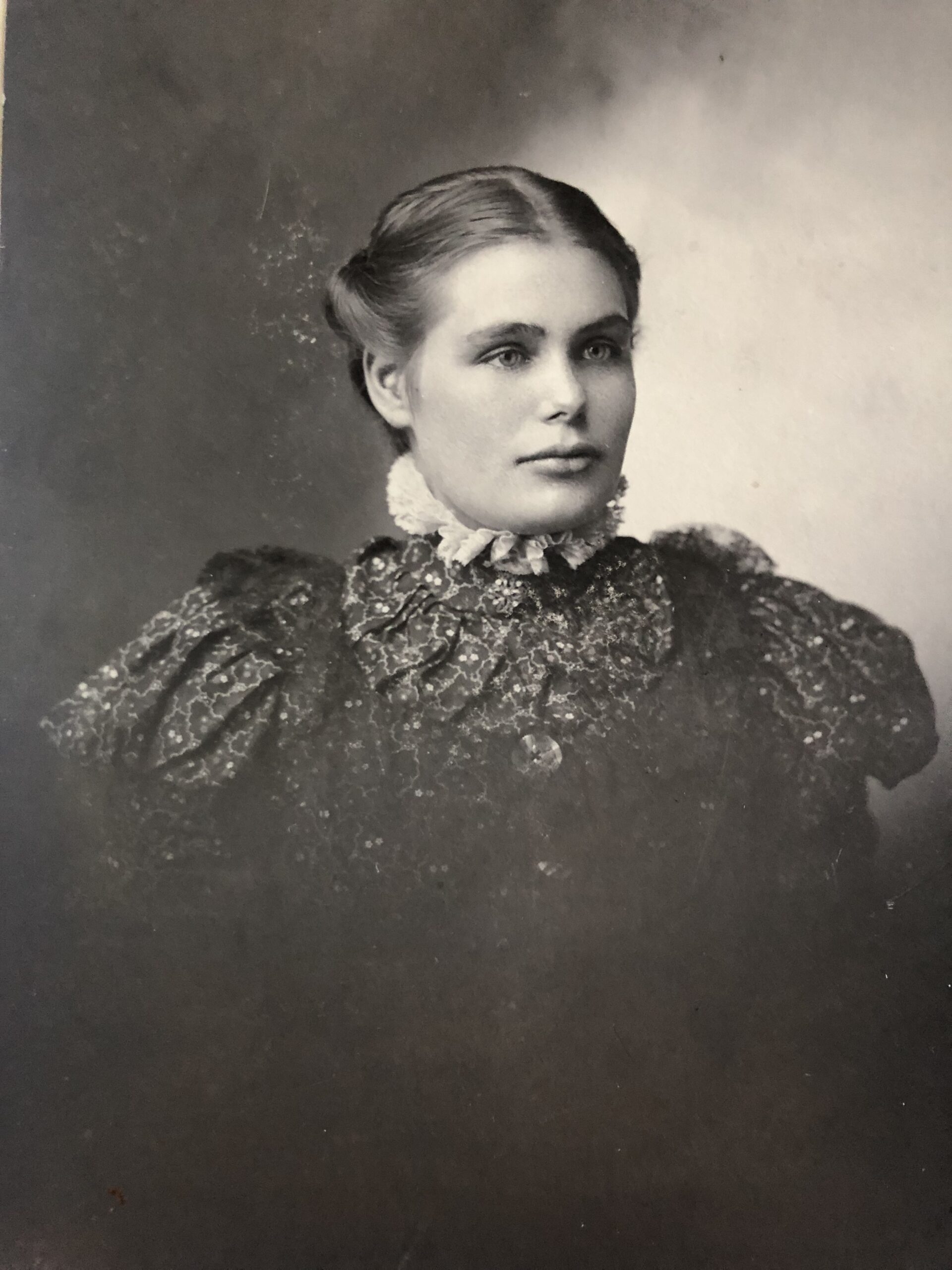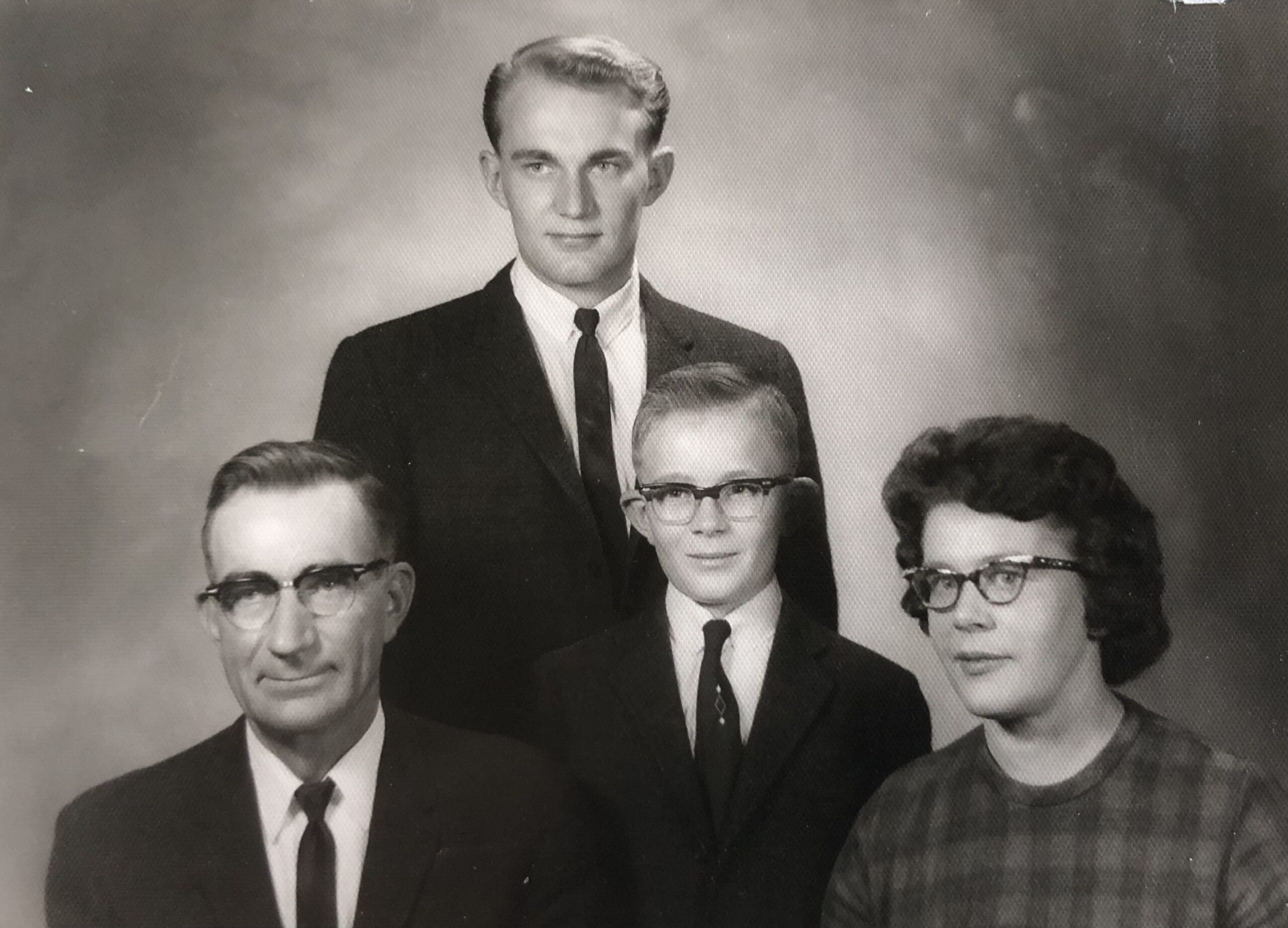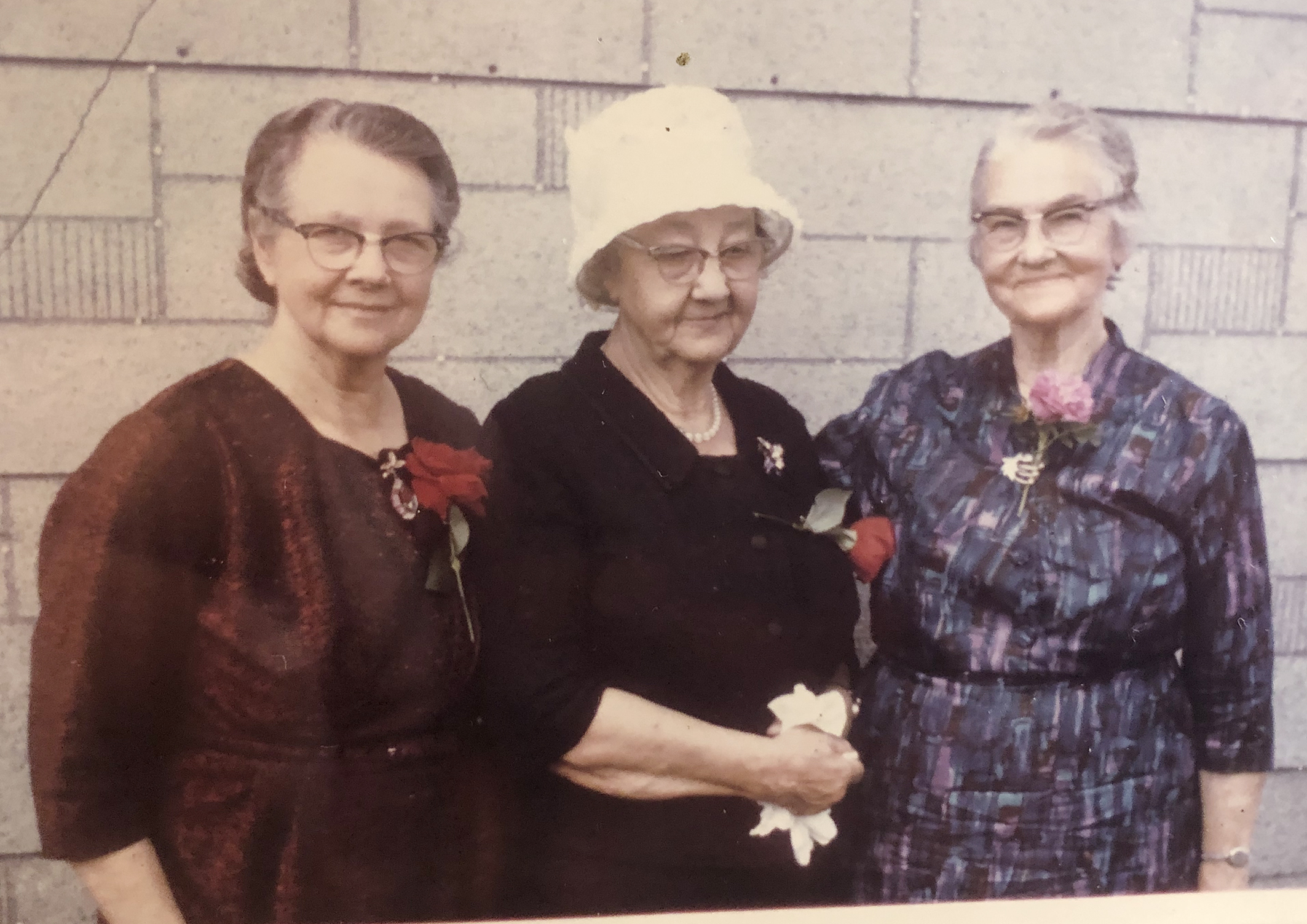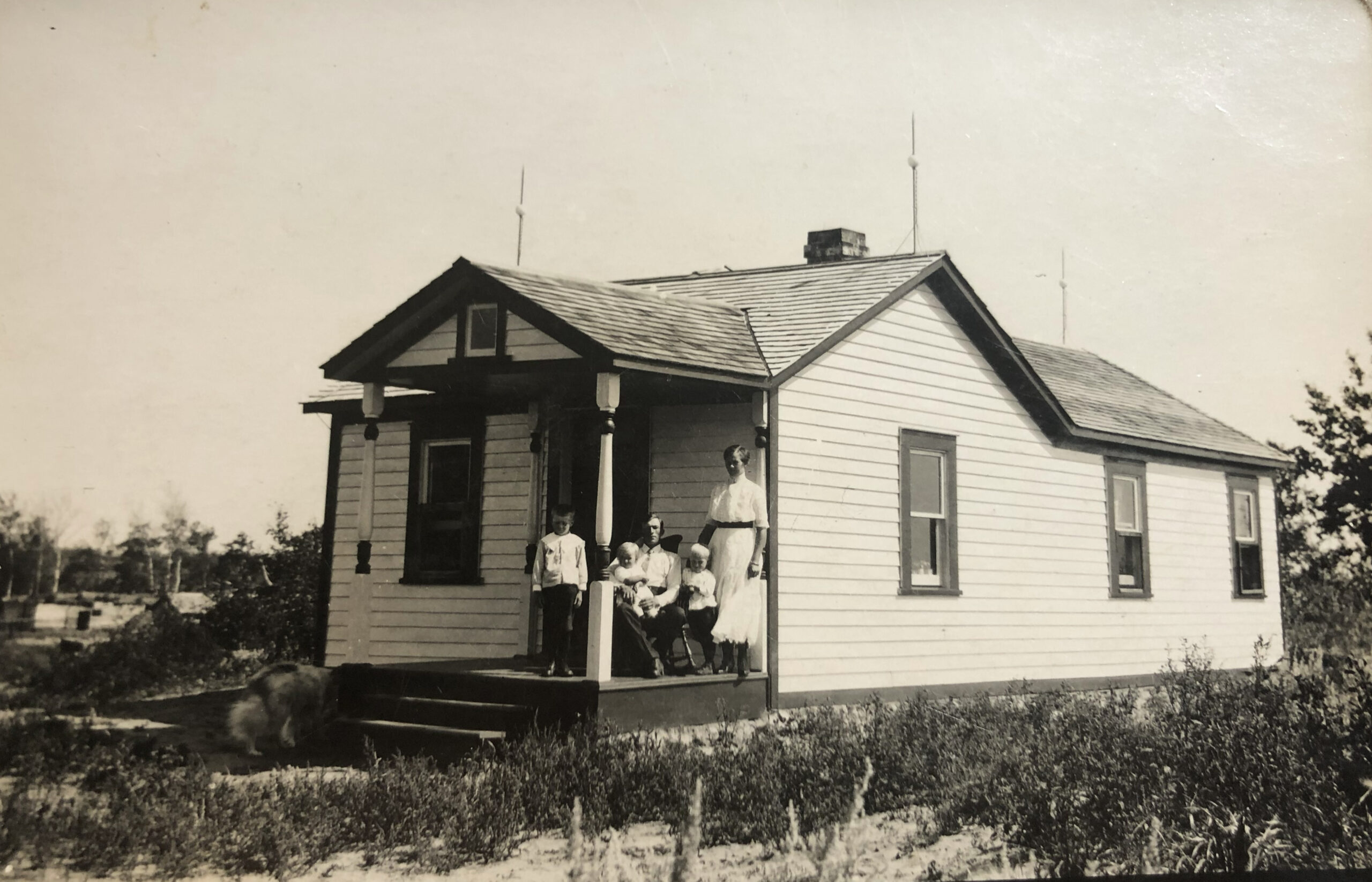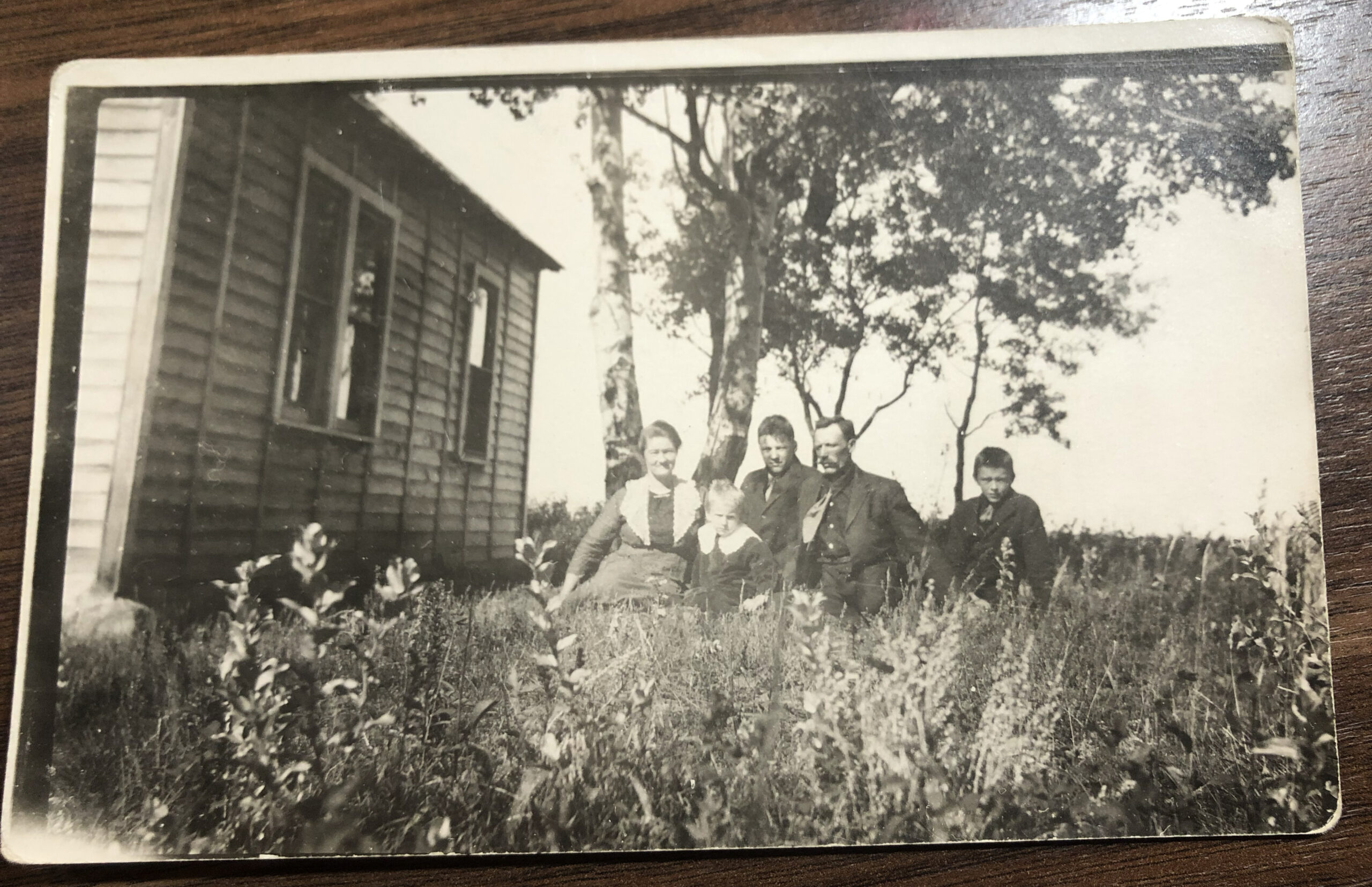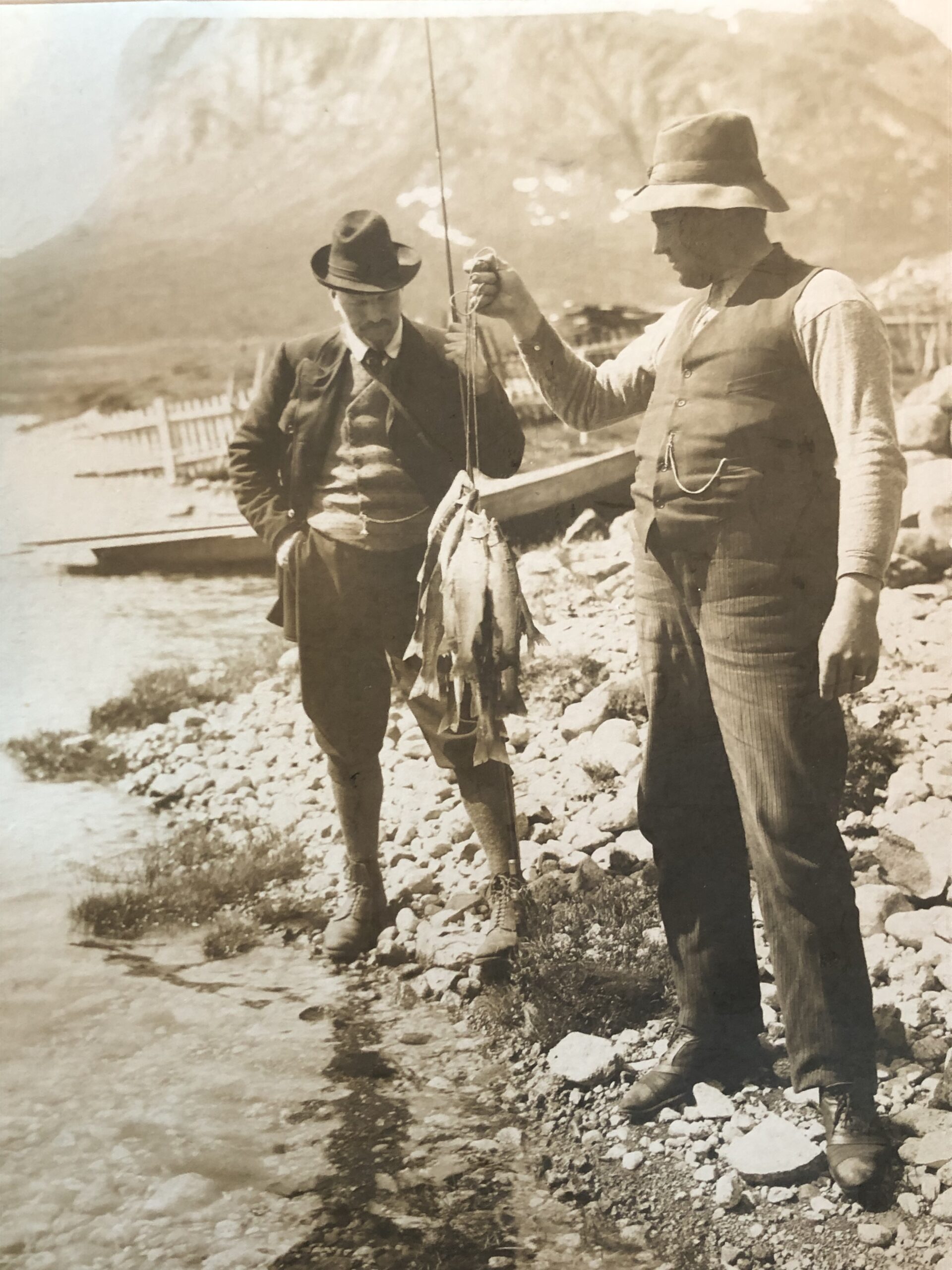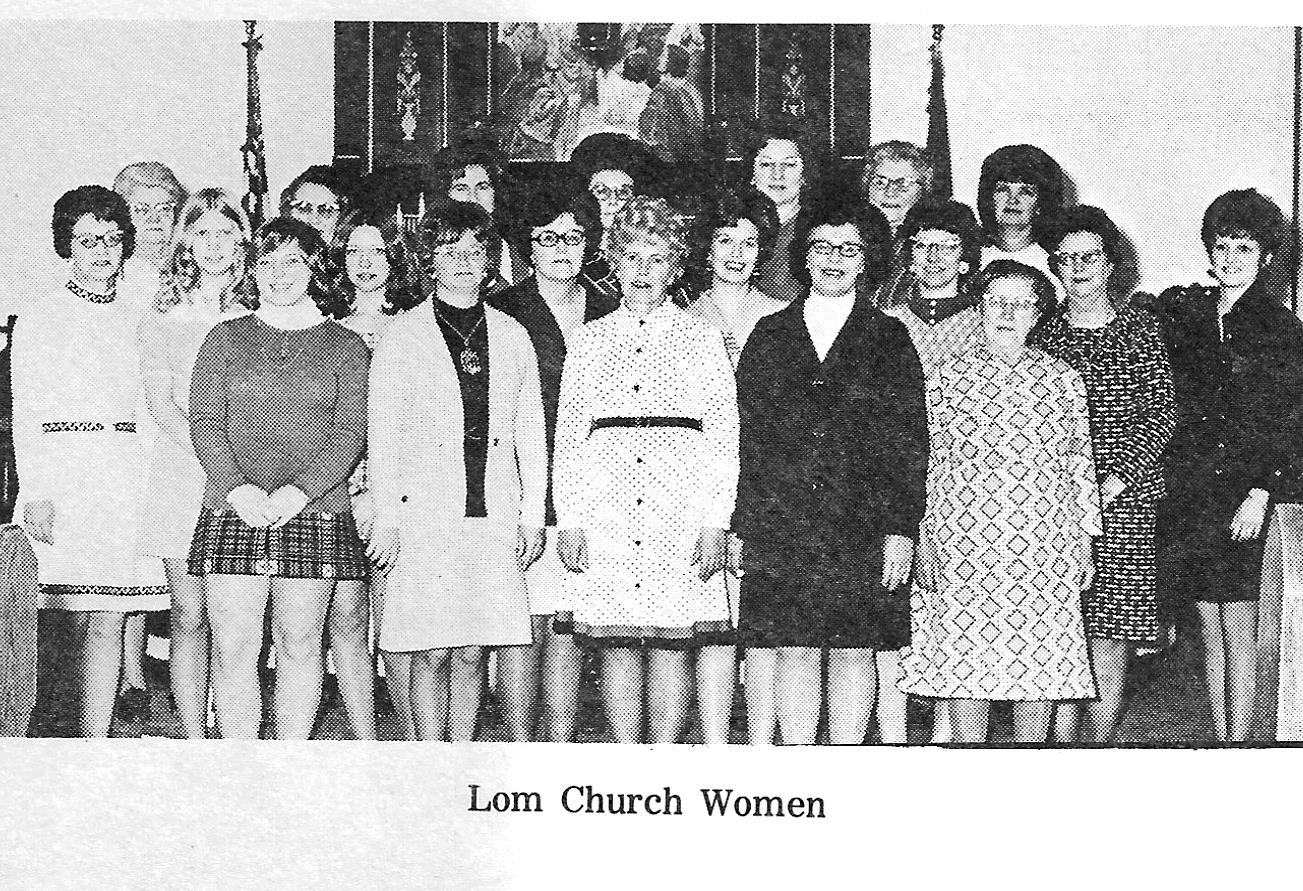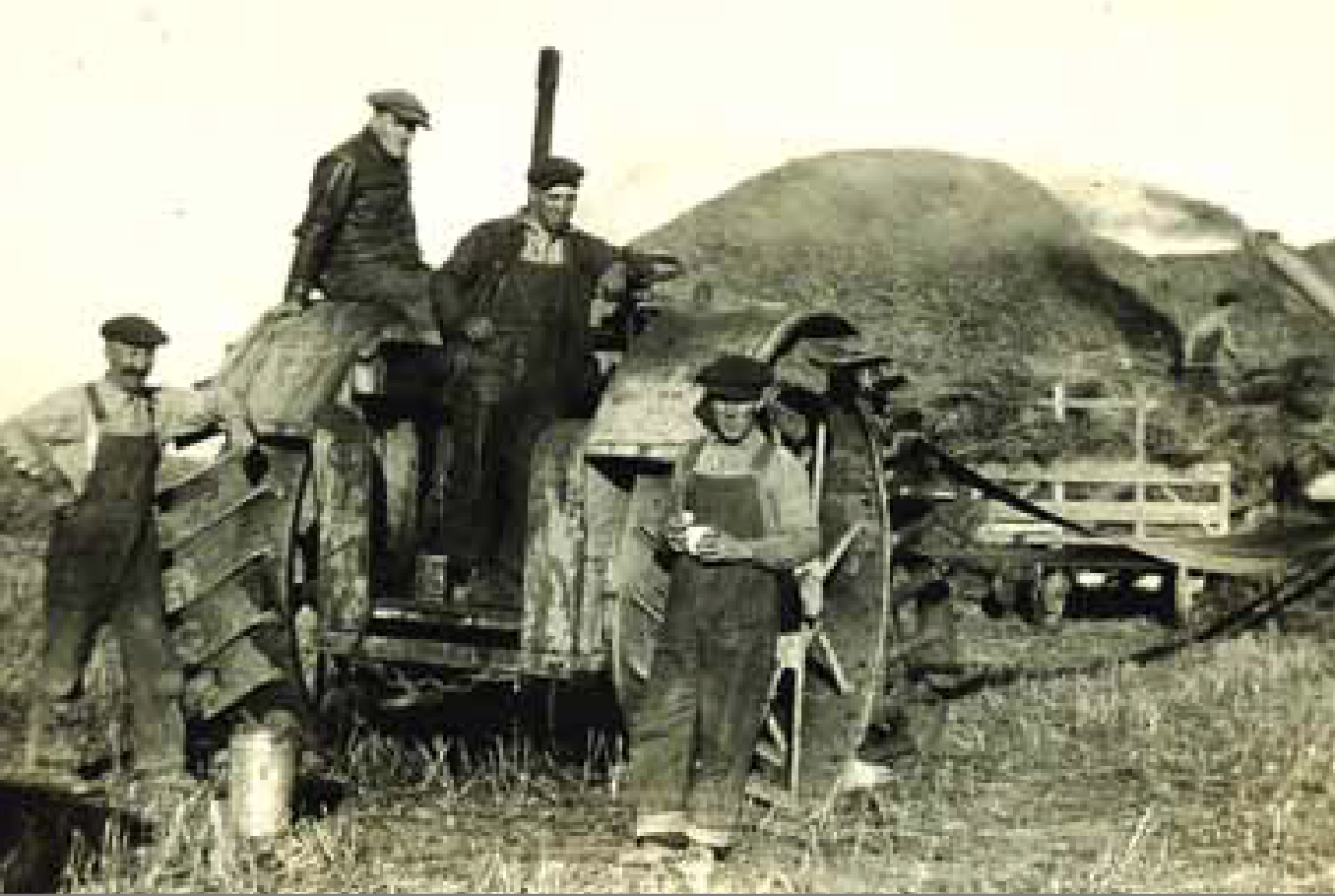
Many of our ancestors from Lom/Bøverdalen/Medalen traveled to America late 18th/early 19th. century. Most of them to North Dakota and Adler Township in Nelson County. As part of the annual report for Lom og Skjåk sparebank for 2004, Ola has put the spotlight on this emigration.
See it all here... (in Norwegian language) See the story about Anders Jonsen's relatives who emigrated to Adler (in norwegian)
Many of the emigrants who settled in this areas cames from Lom/Bøverdalen/ Medalen in Norway. This is a story about how an Bøverdal-dominated area has developed from the first settlement until our days. The extensive emigration of householders from Medalen and Bøverdalen to North Dakota certainly helped to influence the statistics. Going through the lists of emigrants from Lom from 1854 until the emigration subsided around 1920, we find many names from Medalen and Bøverdalen. In the years 1857-1860, 98 people traveled to America from this area in Lom, Norway. 79 of them were from Medalen/Bøverdalen. In 1866 alone, a total of 133 persons traveled to America from this litle area. About half of them had Bøverdal/Medalen names. Of the 144 who traveled in 1880, 62 were from Medalen/Bøverdalen i Lom. Another «peak year» was 1903, when half of the 121 who traveled from Lom were from Bøverdalen. A total of 91 homesteads had then been registered in ND from Lom.
Free Prairie Land
It was especially the promise of free prairie land that tempted, and reports came back of farms as big as entire villages. Large farms home in Lom were only small farms in America. «It was just a matter of putting the plow in the ground». The stone that was found was small, and it was not necessary to fertilize the soil. There were no differences in status between people, and each individual was assessed according to what they were good at.
Adler Township
In North Dakota, a colony of persons from Bøverdalen where developed in one area, which established themselves with their own farms in Adler Township in Nelson County. There were several large farms owned by and named after people who had left homesteads in Medalen in Bøverdalen. We do not know how and why they found this particular area in North Dakota. The first arrived here as early as the 1850s. There were allso many similar colonies where the first pioneers settled down and explored the area and then brought more and more from their homeplace in Norway.
The Homestead Act (1862) made it possible for anyone to be assigned land. They then had to live in the area for five years and have a house built. 10 acres should be cultivated. Later, the settlers were allowed to take another 80 acres by planting trees on at least 10 of these acres. Together, each farm could then be 90 acres or about 320 square meters. Around the turn of the century, there was still plenty of so-called State Land in Adler Township. But gradually all the land was disposed – either for farming or for public use such as churches and schools.
Prairie soil as a building material
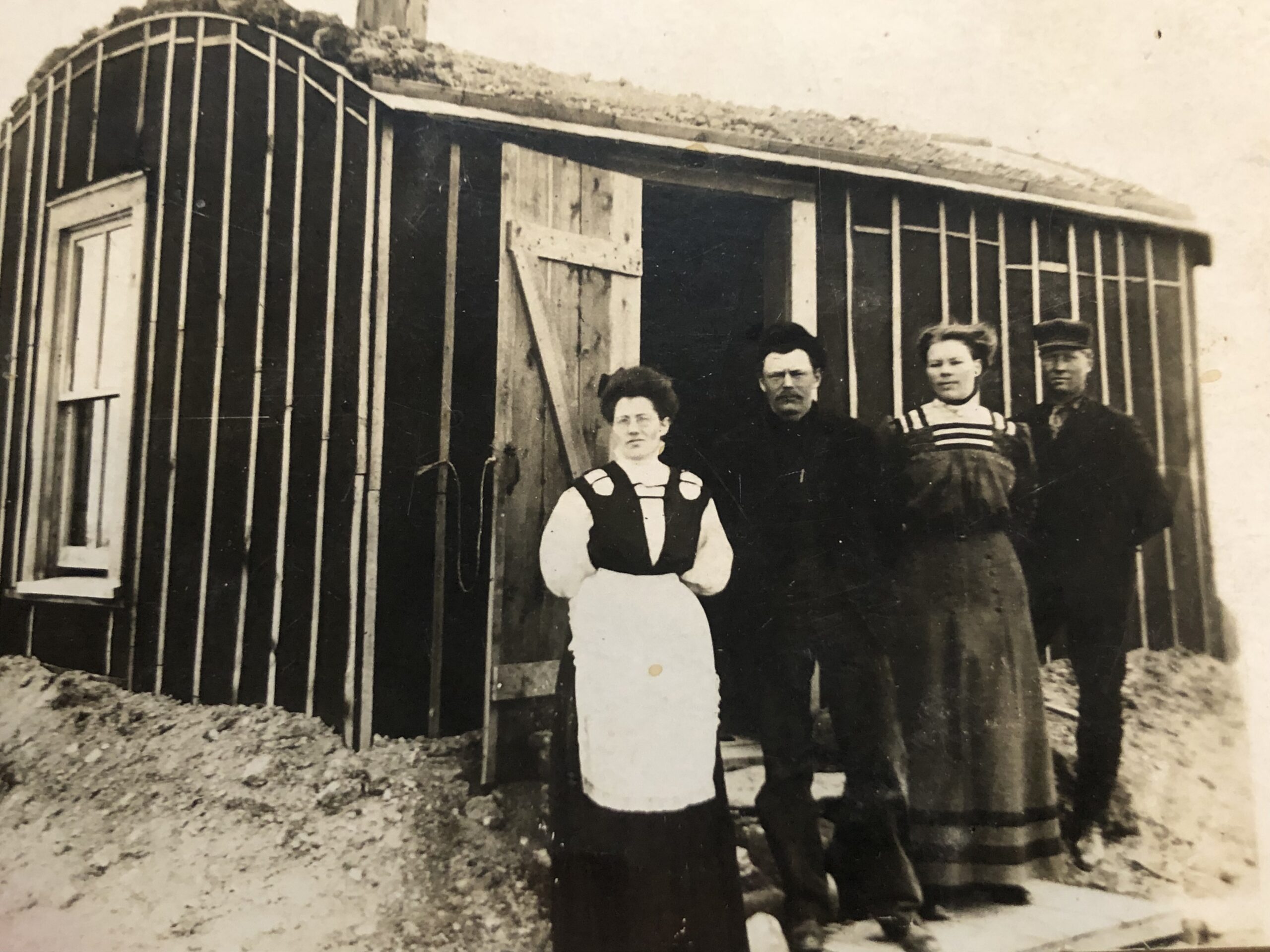
Timber was very expensive in North Dakota. But, the virgin prairie soil served as building material. Around the «house» it was plowed up. Sod* was used as a building material. The area that was plowed up served as protection against the many prairie fires that ravaged the area. The winters can often be harsh and cold and must have been difficult to get through. The summers could be dry. The 1920s were particularly difficult with extremely little rainfall and a lot of wind. In addition, swarms of locusts did a lot of damage. The swarms were so huge that they completely covered the sun when they invaded the area. The farmers received little for their products at the same time as the prices of consumer goods and taxes went up. Many had to give up farming in those years. Not until the end of the 1930s did the turning point come with new and more adapted varieties of grain, better cultivation techniques and more modern motorized equipment.
* Earlier writen «peat» but Marte Holen Stensli, living near Devils Lake, says this is «sod». Peat is «torv» in Norwegian. There is no peat/torv at the prairie. Sod is grass and soil.
Marte lives at Devils lake with land north of Lakota in Nelson County. She went to school in Lakota. She is born in Brumunddal in Norway, lived for a year in Vågå, moved to Skaabu/Kvikne and moved to North Dakota in 2001. Marte brought her firste Døla horse to USA in Oct. 2001, Vollaug Silver. All the Døla horses in USA are owned or bred by Marte. She is a pioneer of our time exactly a century after our ancestors from Medalen had to leave their home and family in Lom and setled in the same area in Nelson County.


Mills and railway the lifeblood
The railway was lifelines through the area and the small villages were built up around the mills.
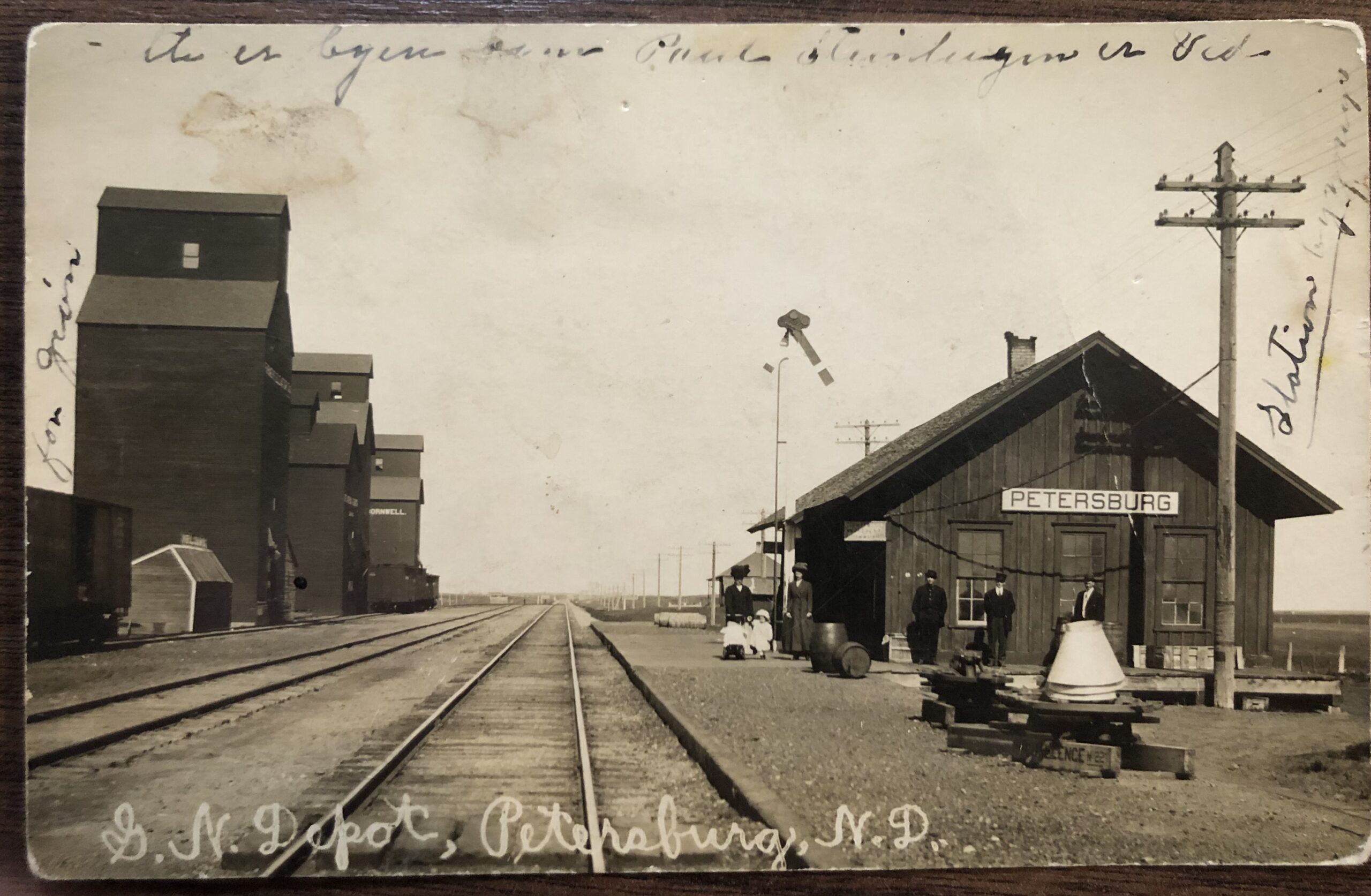
McVille, Petersburg, Niagra, Aneta, Kloten, Pekin, Hamar and Tolna, all of which only had a few hundred inhabitants, were meeting places and trading centres. In shops, bars and at the mill there were many Norwegians who worked, and the conversations here were also in the old language. In other words, once you had arrived in Adler Township, there were no language barriers. In that way, the journey into the unknown was perhaps not such a big step to take after all.
Bøverdal families in Adler
We have tried to create an overview of all the families from Lom and especially Medalen/Bøverdalen who settled in Adler Township. It is partly based on help from people who lived ther them selves, and partly made use of information from the book Nelson County History, the book which mentions every single family in all the municipalities in Nelson County.
The Mundhjeld farms, the three brothers Sever, Erik and Gabriel Mundhjeld all traveled from Bøverdalen to America around the turn of the century and each had a farm in Adler. They were each married to a sister from Borgen in Lom. Sever g.m. Annie Borgen, Erik g.m. Lena Borgen and Gabriel g.m. Lizzie Borgen. Sever and Annie’s daughter, Sadie, was married to Ehler Reimers and later took over the farm. Erik and Lena’s daughter, Stella, was married to Norbert Mayer and took over the farm. Gabriel and Lizzie had no children.
Jacop Aasen traveled to America as late as 1915. After working both in North Dakota and Canada for almost 20 years, he bought the farm from Ole Alfson. He sold this farm to Louis and Mildred Larson in 1945. After being at home in Bøverdalen for a while, he bought the farm of John P. Johnson, which he operated until he passed away in 1970.
Kvamme farm was bought and run by Ola (Ole) Odegaar (Ødegård). He had several sons, all of whom worked up their own farms or rented land in Adler Township. Tom (Torstein) Kvamme left Lom in 1872 and worked in Wisconsin for two years before moving on to Adler to be allocated land. There he married Mary (Magnhild) Slaalien b. 1866, who had come to Adler via Butterfield Minnesota from Bøverdalen/Lom.
Gilbert (Guttorm Lillehaugen) Larson had homestead in Adler together with his wife Kari (Carrie) Andersen. This farm was taken over by his son Albert. This farm and the farm of his brother Louis were neighboring farms.
The Gilbertsen farms, which the twins Sever and Gilbert run. Two other brothers, Ralph and Otto, also each had their own farm in Adler. Sister Bertha was married to Ole Odegaar (Ødegård) at the Kvamme-farm. The parents were Gudmund Odden Gilbertsen and Brit Steinteigen from Runningom in Bøverdalen. Gudmund and Brit homestead in Adler in 1893.
Per Repp (Pete Reep) traveled to America in 1914 together with sister Embjørg and bought his farm from Nels Alfsen in 1929 (brother of Ole, from whom Jakop Aasen bought his farm). Per farmed together with his brother.
The Pedersen farm was owned by Andreas (Andrew) Tandestuen from Medalen. Andreas was the son of the well-known Per Spelmann. The Pedersen name originates from him. Andreas’ wife was from Borgen. They had three sons: Palmer, Oscar and Meldvin.
Jo (John) Anderse(o)n, who was the son of Anders Johnsen and Marit Olsdatter Visvollen, moved to North Dakota in 1893. The family lived on various homesteads in Medalen (Engjom, Visvollen, Stigen, Søregard Øyjordet and Glømsdalsøya). Later, the twins Embjørg/Emma and Marit/Mary and Kari/Cary also traveled to America. Embjørg was married to Sevald Hanson who was born at Steinen i Medalen. Sevald bought his farm from Gilbert Gilbertson sr. and his wife Kari Repp in 1912. They traveled back to Norway in 1914. Marit was married to Theodor Borgen and Kari married to Gilbert (Guttorm) Larson. Youngest brother Ola was also in America for a few years, but came home again in 1914.
There were several of the Borgen farms in Adler. Lars Borgen b. 1845 and his wife Sigrid born Vole first traveled to Wisconsin. They later homesteaded in Adler in 1888. They had these children: Theodore b.m. Mary Anderson, Annie b.m. Sever Mundhjeld, Leva g.m. Erik Mundhjeld, Lizzie g.m. Gabriel Mundhjeld, Clara g.m. Tom Myhren and Leo. Most of these were built in Adler Township. Gilbert Aamodt from Bøverdalen b. 1889 worked on various farms in Adler Township.
Nils Alfson emigrated to Adler in the early 1890s and took a homestead. His brother Ole spent most of his life together with Nils.
Ole Christianson from Lom came in 1898 and farmed together with his wife Rena Berg.
Anna Odden from Bøverdalen, born in 1875, married the Dane John Frandsen and bought the Ekrom farm in 1913. Anna sewed clothes on assignment. Sylfest and Tora Hagen and Gilberg Hagen came from Lom and took homestead in 1889.
Marie Slaalien b. 1901 was married and built up a farm together with Charley Johnson from Larimore.
Anna Alfson from Lom homesteaded land in Adler in the early 90s. Anna helped to found Lom Lutheran Church, and was the first leader of Ladies Aid. She married Andrew Lunden and moved to his farm.
Louis Moen came to America as a 13-year-old with his parents and brothers Ole, Thorsten and Tore and sisters Ingrid, Marit Gunda and Mamie. After living for a while in Minnesota, he moved on to Adler in 1896 and homesteaded. There he married Anna Severson.
Thorsten O. Moen was born in 1833. He came to New York in June 1893 together with his wife Marit Borgen, and they had a total of eight children. They claimed land in Adler in 1903.
Thorsten G. (Tom) Myhren b. 1884 was the son of Gudbrand and Anna Myhren in Bøverdalen and came to Adler in 1903. Clara Borgen, b. 1888 in Viroqua Wisconin, was the daughter of Lars T. and Sigrid Borgen. She came to Adler with her parents and married Tom Myhren in 1911.
Andrew Pederson emigrated in 1893 from Lom and traveled to Adler via New York. There he was allocated land in the same year. Six years later he married Marit Borgen, who came to America in 1896 with her sister. Erik and Sigvald Pederson and Olaus and Thor Haugen were all brothers of Andrew Pederson. Erik came to Adler around 1900 and bought a farm near Adler School No. 3. Sigvald was a carpenter and spent much of his life in Adler.
Thorston and Ingrid Sonstnenes (Synstnes) were probably also from Lom and came to Adler in 1891.l Adler i 1891.
Det sosiale liv i Adler
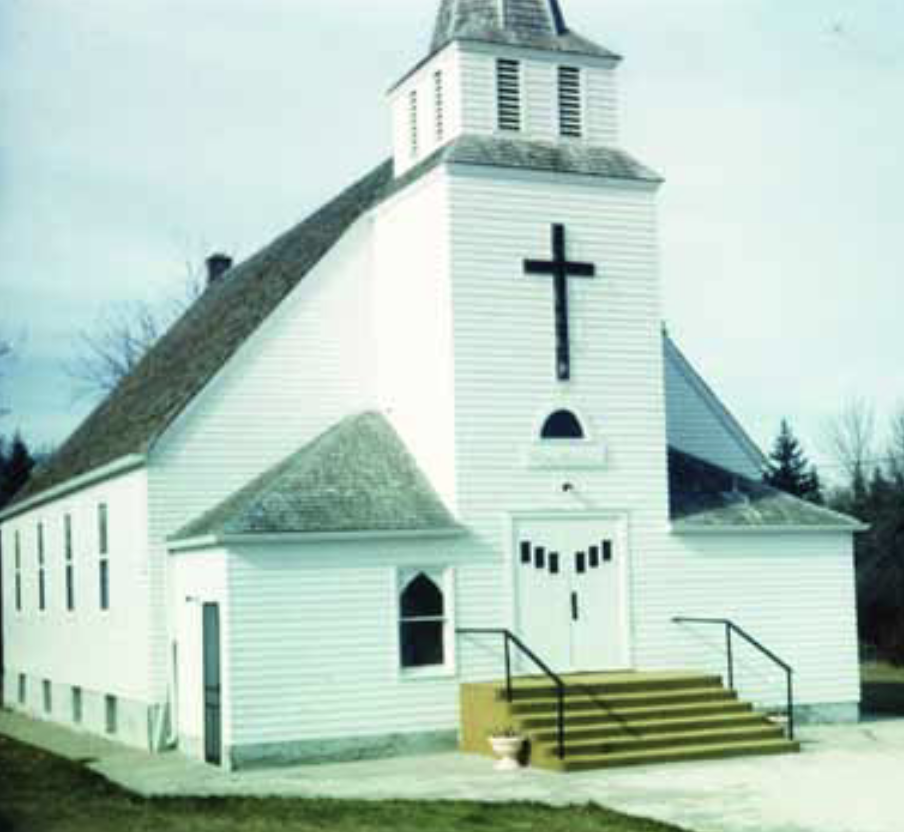
The church was central in daily life in Adler. In addition to the church services, there was extensive organizational life based in the church. Lom Evangelical Lutheran Congregation was founded around 1900. The first Lom Lutheran Church was built on the farm of Lars T. Borgen in 1900. The church was later sold and moved to Theodor Borgen as a living house, and a new Lom Church was built on the same site in 1922. This church burned down in 1949, and a third church was ready in 1953. Many Norwegians who have been over and visited their relatives in America, have been received and shown around this church.
Many Norwegian families have had their final resting place in the churchyard in Adler. The altarpiece in this church was painted by Svanhild Røhr from Lom. Lom Sunday School was formally founded in 1939, but had activities since around 1910. Lom Ladies Aid was started as early as 1899, and had regular meetings with fundraising for charitable causes as its main activity. Lom Ladies Aid was later incorporated into the Women’s Missionary Federation and then finally into the Lom American Lutheran Church Women. The Norwegian ladies in Adler were central to the work here.
P.A.N Homemakers Club brought together women who worked with housework and crafts. The housewives gather around the homes. The handiwork was partly sold for charitable purposes.
Of course they also had a 4-H Club in Adler. The girls primarily learned kitchen maintenance, and the boys were introduced to farm management. The school building was used as a community center where people met for card games, dancing and other social activities.
From the first emigrating to North Dakota and Adler Township more than 150 years ago until today, there has been an adventurous development in the area. Those who came to America naturally settled as close to the east coast as possible and gradually established themselves westward. North Dakota is in the very north of the USA, and Nelson County is in the very east of the state. Some sought out Wisconsin because the nature there was more similar to the nature here in Ottadalen.
Depopulation and closure
Within 50 years, the area around Adler Township was populated by Norwegian settlers, who formed a new community in an area where people had never been settled before. Today, there are not many of these in the area. The development is very similar to what we find on the outskirts of Norway, with depopulation and closing down infrastructure. A few Norwegian families still run their farms in Adler (Gilbertson and Borgen), but the vast majority of the farms have been sold, and are now part of huge joint farms where grain is grown on a large scale. The operation of the land has been through a lot of modernization. Many of the buildings that only 50 years ago housed families and formed the basis for a socially vibrant society, today lie fallow and dilapidated.
The descendants of the Bøverdøls in North Dakota are now scattered but still «ware» the old surenames fro Norway. Some of them customized english language thow. It is a fact that more and more of these descendants are captured by the interest in following in the footsteps back to the places they came from back in late 19th and early 20th century.
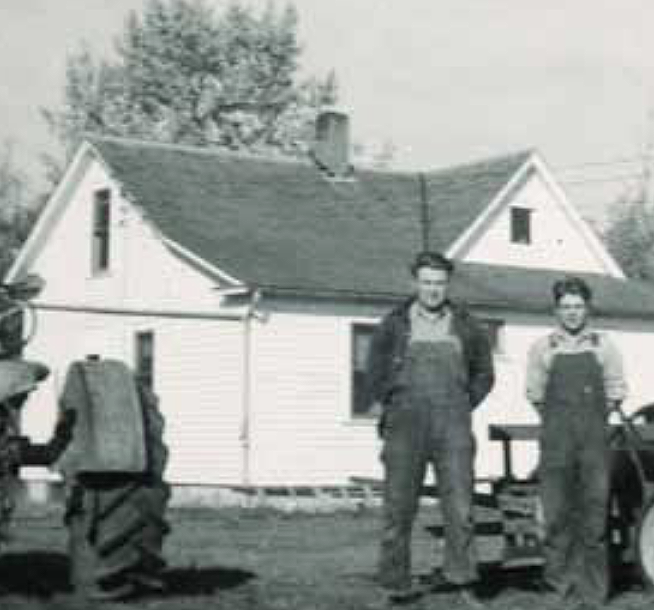

See overview of householder places in the Medal by Ragnar Skjelden and Jorunn Kvale. (In Norwegian)
